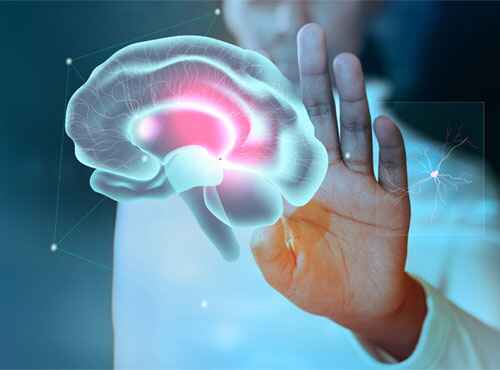Strokes can have different downsides depending on how much and which part of the brain is affected. They usually cause problems with:
- Muscle control
- Movement
- Thinking
- Memory
- Speech
A minor stroke can lead to less severe issues such as weakness in an arm or leg, while a major stroke can result in changes in cognitive-behavioral abilities, such as recognition or a permanent loss of speech. In many cases, if treatment is not begun, a person may lose a life.
Types of Stroke
Strokes are basically classified into three categories:
- Transient ischemic attack (TIA)
- Ischemic stroke
- Hemorrhagic stroke
Further, these categories are classified into:
- Embolic stroke
- Subarachnoid stroke
- Intracerebral stroke
- Thrombotic stroke
Treatment depends on the type of stroke you have and the complications you are going through.
Ischemic Stroke
If you have an ischemic stroke, it symbolizes that blood vessels have become weakened or narrowed. The reason could be either impaired blood flow or blood clots in one of the blood vessels. Many times, plaque buildup in the blood vessels due to atherosclerosis also results in a stroke.
Ischemic strokes are further classified into:
- Thrombotic Stroke: It is an obstruction in the blood flow due to one or more clots in the arteries supplying blood to the brain.
- Embolic Stroke: An embolic stroke indicates one or more clots in any part of the body that travels up to the brain.
Transient ischemic attack (TIA)
A transient ischemic attack often called a ministroke, is impaired blood flow to the brain temporarily. However, the signs of TIA are similar to a major stroke, except the fact that they occur for a short span and disappear after few hours.
TIA is an indication of a future stroke, so if you have it, seek immediate care from your healthcare team.
According to a report by the Centers for Disease Control and Prevention (CDC), more than 33% of people who experience a TIA and ignore the treatment are bound to get a major stroke within a year.
And up to 15% of people have a major stroke within three months.
Hemorrhagic Stroke
A hemorrhage stroke is the opening of the artery in the brain that begins to leak blood. This blood from the artery creates pressure in the skull that results in swelling. Over time, the brain cells and tissues may start to get damaged.
The two types of hemorrhagic strokes are intracerebral and subarachnoid.
- An intracerebral stroke occurs soon after the artery bursts out, and the tissues surrounding the blood fill with blood.
- Subarachnoid stroke is a less common form of stroke. Generally, this happens because of bleeding between the brain and the tissues that act as a covering layer.
Symptoms
Treatment options are particularly effective when given soon after a stroke. So, it is important to watch out for the onsets of signs.
Though signs are individualized, some general signs that may help diagnose, include:
- Trouble speaking and understanding what others are saying.
- Experience a confusing state of mind.
- Paralysis or numbness in your arm or face or leg. This affects just one portion of your body.
- Problem in eyesight.
- Your mouth may droop when you try to speak or smile. You may have blurred or blackened vision in one or both eyes.
- A sudden and severe headache, followed by vomiting, dizziness.
- You may lose balance or stumble through.
Try to raise your arms (both) over your head at the same time. If one of your arms begins to stumble down, likely you have a stroke.
When to see a doctor
A stroke requires emergency care and support. If you have any signs of stroke, even if they occur temporarily, consult your doctor right away. Stroke can still be prevented if immediate treatment is initiated. Ayurveda is also helpful to present some awful and distressing conditions that developed after a stroke.
Risk Factors
Factors that can result in a stroke include:
Lifestyle Factors
- Being obese
- Living a sedentary lifestyle
- Substance abuse
Medical Risk Factors
- Hypertension
- Exposure to secondhand smoke
- High blood sugar
- High cholesterol
- Obstructive sleep apnea
- COVID-19 infection
- Cardiovascular diseases such as heart failure, infection, or heart palpitations, etc
- A family history of stroke, heart attacks, et
Other factors associated with a higher risk of stroke include:
- Age: Being elder also puts you at the risk of a stroke. The risk is high in people who are older than 55.
- Gender: Men are likely to get stroke than women. Women usually have a high risk when they are older.
- Hormones: There is an increased rate of ischemic stroke in people who undergo hormone replacement therapy (HRT) or using birth control pills for a while.
Ayurvedic treatment for brain stroke
In Ayurveda, Stroke is known as Vata Vyadhi. Ayurveda offers a safe and effective treatment for curing Stroke. The ayurvedic methodologies include medicinal herbs, therapies, and procedures meant to detoxify the body of toxins and promote overall health improvement. Panchakarma therapy at AyuKarma, including oleation and fermentation, helps to improve the functioning of the nerves in the affected area.
When a stroke occurs, damage to the voluntary movement impulses results in paralysis. Ayurveda is a step in the management of stroke that eliminates the condition leading to stroke. As the disease is triggered by Vata dosha, the body gets dries up, and a person loses control over sensation and movement. Curing it requires therapies for detoxification, dietary regulation, and stress management practices. The treatment also ensures that aggravated doshas get calm and you attain physical, emotional, mental, and spiritual well-being.


